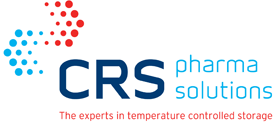Medical device verification, traceability and reporting requirements
Patient safety and health are directly affected by the performance of medical devices. These tools are used by a wide variety of users - from the general public in their homes to the illest patients in hospitals and clinics. Improper storage along the supply chain may lead to undesirable and serious consequences.
In this article, we explore the main considerations when verifying and reporting on medical device performance according to the new regulations ((EU) 2017/745 and (EU) 2017/746).
Verification
Medical devices that require refrigerated storage need to be checked regularly to guarantee optimal performance. To make sure you carry out these verifications in an efficient way, you should line up a strategy to monitor that both cold chain conditions and timeframes are consistently met.
Traceability
Keeping track of all records in relation to the sourcing and supply of medical devices will be key to prevent the spread of a product recall. One of the most effective ways of limiting the recall to only the affected batch is by keeping records by lot number. The basic information you should keep handy is batch/lot number, quantities, delivery date, medical device and name.
The system used to maintain product traceability should be challenged periodically to ensure its capability of determining stock location.
Under the new regulations, you should maintain records of:
- Invoices relating to the receipt and supply of a medical device
- Orders relating to the receipt and supply of a medical device
- Economic operators, health institutions and healthcare professionals to whom medical devices were supplied
- Checks carried (for example labelling checks for CE marks)
Validation and qualification
Validating and qualifying the process and the equipment used during the distribution of medical devices will allow you to understand its effectiveness. Validation must demonstrate the ability of these processes to achieve the desired and planned results consistently.
The process should start by identifying critical steps (goods-in, storage, order processing, dispatch). Once these have been clearly defined, you should include an entire run through the system from start to completion to ensure that each individual process does not have a negative impact on the following one.
It is necessary to define a protocol that explains how the correct operation of the device is going to be verified. This qualification protocol should be defined and reviewed by the company and conclusions from these exercises should be documented.
At the end of the process, you will need to prepare a report summarising the results, commenting on issues observed and drawing conclusions to correct deficiencies.
At CRS, we understand how important it is to provide complete temperature control when refrigerating and transporting pharma products. If you’d like to know more about our Controlled Room Temperature Stores - get in touch.







